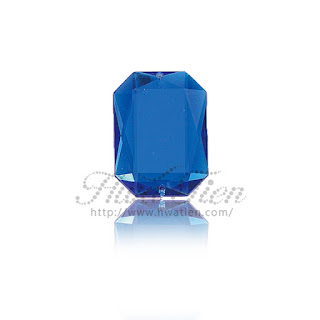Durban Art Gallery curator Hlengiwe Dube shows an ibhayi, or bridal apron, from Bergville, one of many beadwork pieces that will be on display from Sunday. Pictures: Bongani Mbatha
Durban - When Durban Art Gallery curator Hlengiwe Dube sees people wearing traditional beadwork, she can tell exactly where they are from.
“The way they put the colours together, how close they are, tells me,” explained Dube, who likens them to a car’s registration plate.
She said she fell in love with beads – “tied the knot with them” – at the age of 12, and even dreams of them.
Now, an art exhibition she and fellow curator Anthea Martin have put together will share this knowledge with people, who can also attend associated workshops.
It is the first time the 50-year-old collection of beads, gathered from areas such as Msinga, Ixopo, Mapumulo, the Valley of a Thousand Hills, Bergville and Eshowe, will be on show to the public.
Safety pins on an isisoka necklace from Msinga, left, is a man’s signal that he is married. The bridal necklace on the right, an isijumba is also from Msinga.
“It hadn’t been documented well enough (until now),” she explained, adding that doing so also gave her the chance to work with conservation centres to learn how to fix damaged artefacts.
Dube said people were curious about the “secret” language in traditional Zulu beadwork and she hoped contemporary artists would be inspired to save the bead culture by using it in their work after learning about it.
But it’s not straightforward, she stressed.
“They are personal messages. Often it’s only the person who makes the beads who understands the messages.”
Beadwork has seen messages move with the times, including the HIV/Aids epidemic, she said.
“In our culture we don’t talk openly about sex and love and things like that, so we worked closely with women to break the silence by using the communication done with beadwork.”
Beadwork on display includes necklaces such as the isisoka, from Msinga, that includes safety pins and sends out the same message as a man’s wedding band.
“When you join things you use a safety pin, so the safety pins show that he is involved with someone,” she said.
An ibhayi or bridal apron, from Bergville, is worn by a bride at a wedding ceremony in a design known as isikoti, made up of several strips, each the contribution of a family member.
“It is worn around the shoulder (at the wedding) and then split into the different panels (strips) for the bride to wear a different one every day as a symbol of respect.”
Then there are dolls, such as the umakoti that a young, married woman will hang above her bed to encourage fertility. And the udoli wesangoma: “people will dress it in the clothes of a sick person and take it to a traditional healer”.
A travelling doll, or udoli wohambo, is a product of the Hillcrest Aids Centre Trust and people carry them around “so they can remember something they are connected with”.
For fifty years the Durban Art Gallery's prized collection of Zulu beadwork has been under lock and key. From Sunday, November 12, the public will be able to view it for a good few months. Right until the end of April next year. Curator Hlengiwe Dube is a mine of information about this aspect of Zulu culture.
With The Secrets of Beads/Imfihlo Yobuhlalu exhibition is a full-colour catalogue, which documents each of the more than 100 items.
The English and Zulu names are given with explanations of age, function and materials.
The gallery’s director, Mduduzi Xakaza, said Dube and Martin had crafted the exhibition to highlight that traditional Zulu society has never been monolithic in terms of their usage of body adornment as a form of cultural expression.
However, back in the day, the Zulu community did not use modern letters to communicate their messages among themselves and that beadwork had always been used not only as a communication tool but also as a currency for trade, especially with European traders who brought glass beads.
“Before the Zulus encountered such traders from across the seas, seed beads were dominant and the introduction of more colour into beadwork might have immensely expanded the scope for utilising this genre for communication purposes,” Xakaza wrote in the catalogue.
He went on to write that in this age of globalisation and tourism, beadwork was still a commercial commodity, exactly as it used to be long ago.
“The only difference is the purpose of consumption,” he wrote. The exhibition runs until the end of May.
Visitors who wear beads deemed to be impressive enough will be spared the R50 fee for the catalogue.












No comments:
Post a Comment